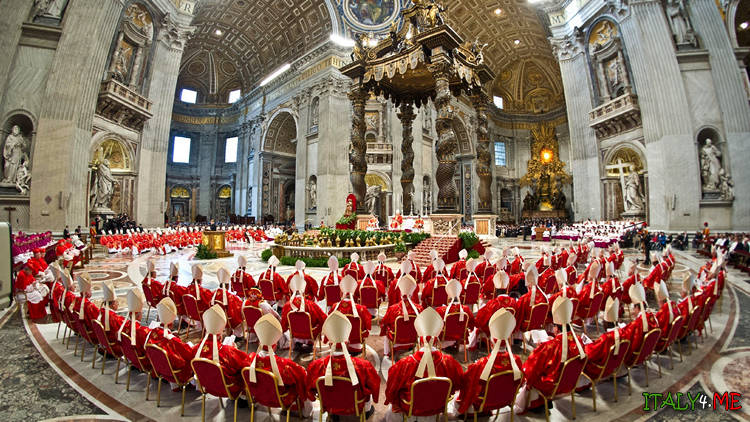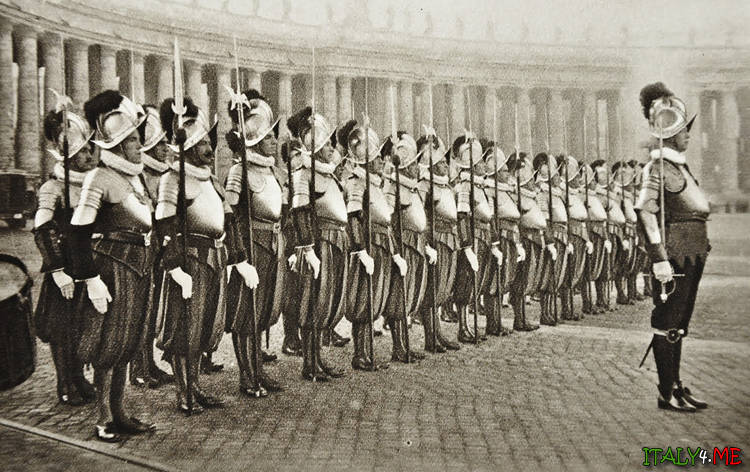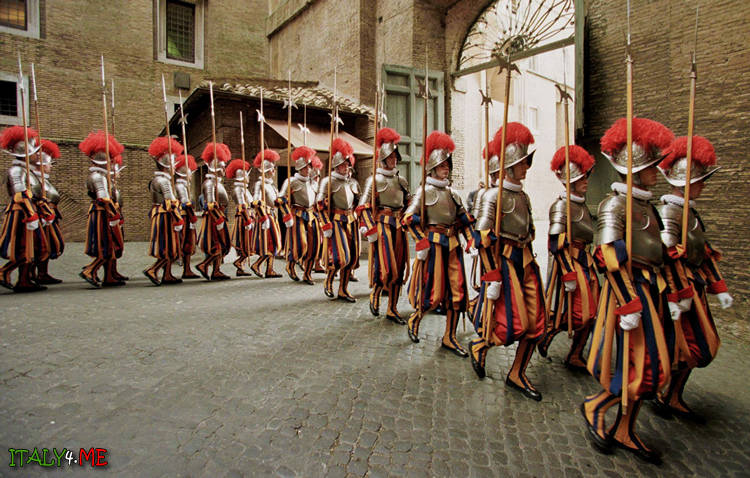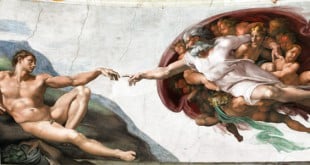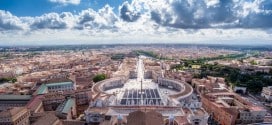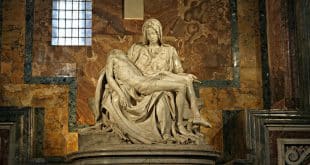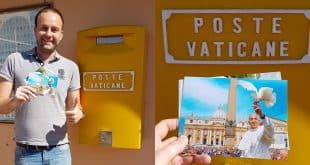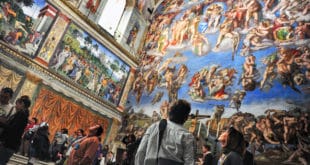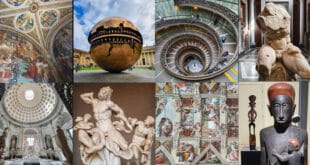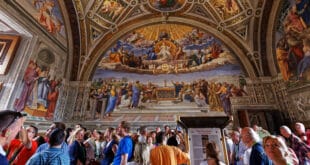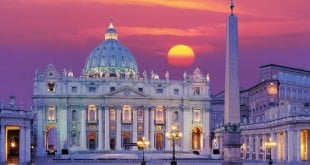Vatican City
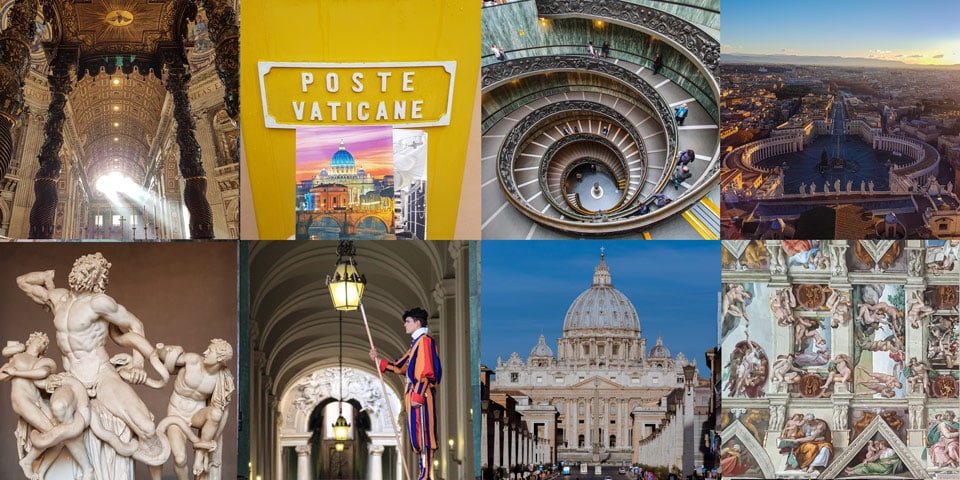
The independent city-state of the Vatican was established according to the Lateran Treaty between the Italian state and the Roman Catholic Church in 1929. It is located on the right bank of the Tiber in the western part of Rome.
The Vatican is the smallest state in the world and houses all the highest governing bodies of the Roman Catholic Church, including the residence of the Pope of Rome. Its area is only 0.44 square kilometers. The population is multinational and consists of 1,000 people.
The name of the city-state comes from the name of the hill it is located on – Vaticanus. The territory of the Vatican is surrounded by medieval walls along its perimeter.
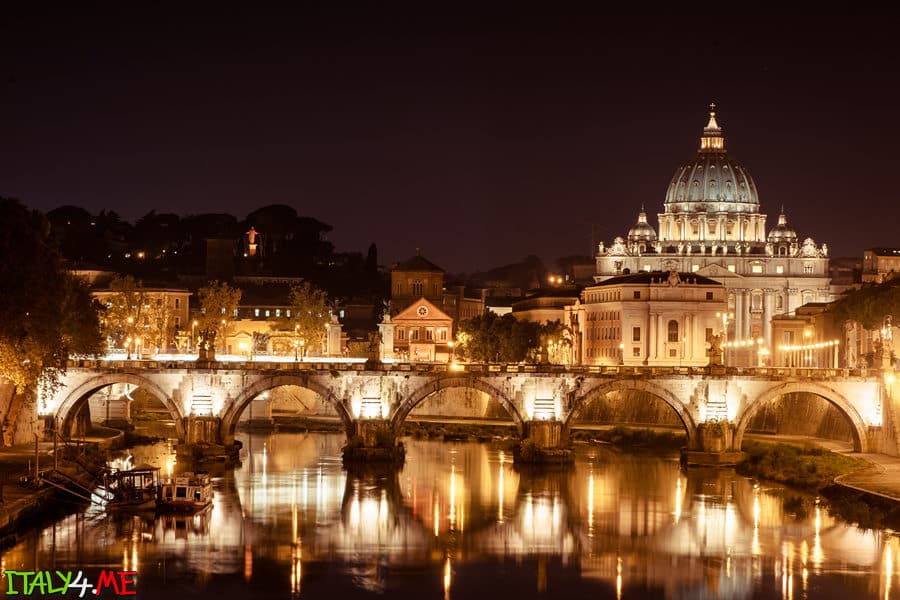
Palatial complexes, Vatican Gardens, picture galleries, museums, and various administrative buildings are on its territory. Formally, the border with Italy runs through St. Peter’s Square. However, it is not marked on the ground.
By the principle of extraterritoriality, some objects located on the Italian side belong to the Vatican. These include the Basilica of San Giovanni in Laterano, the Santa Maria di Galeria radio station, the summer papal residence in Castel Gandolfo. In addition, several educational institutions are also under the Vatican’s jurisdiction. Among them are the Pontifical Urban University, founded in 1927, the University of Saint Thomas Aquinas, founded in 1909, and several others.
Page Contents
Vatican Attractions
St. Peter’s Square and Basilica
Thousands of tourists and pilgrims come to the Vatican every year. They all want to receive the papal blessing and see the unique monuments of architecture and history with their own eyes. A twenty-five-meter Egyptian obelisk rises in the center of Rome’s largest square – St. Peter’s Square.
The dimensions of the square are 340 by 240 meters. A unique monument of the Renaissance era on the square is the St. Peter’s Basilica, built according to the project of Donato Bramante. The colonnade around the square of 284 columns was created by Giovanni Lorenzo Bernini. The facade of the Basilica was designed by Carlo Maderno. Topping St. Peter’s Basilica is the creation of Michelangelo Buonarroti. St. Peter’s Basilica was recognized as the most incredible creation of world architecture.
We recommend: Climb to the dome of St. Peter’s Basilica at dawn
The Vatican palaces form the world’s largest museum complex. In their numerous galleries, exhibition halls, and internal courtyards are priceless works of art. This wealth has been accumulated over many centuries by each Roman pontiff. The Vatican Library contains the richest collection of books and ancient manuscripts. In the Sistine Hall is a manuscript Bible dated to the 4th century.
On September 29, 2019, Pope Francis inaugurated a monument to migrants on the square on the left side near the colonnade.
The Sistine Chapel
The Sistine Chapel was built by architect Giovannino de’ Dolci at the end of the 15th century by order of Pope Sixtus IV. Inside, the chapel dome is painted with famous frescoes by Michelangelo, a bright attraction of the Vatican.
The Sistine Chapel is constantly open for visits, except when electing a new pope occurs. Traditionally, if the assembly of cardinals comes to a unanimous decision, the voting results are announced by a column of smoke from the chapel’s chimney from the burned ballots. If no decision is made, the smoke is black; if a decision is made and the Pope is elected, then white.
Vatican Gardens
The Vatican Gardens are among the most protected places in the world. They are the most beautiful gardens in Europe and a place where you can wonderfully relax, of course, only the chosen ones, in silence and greenery.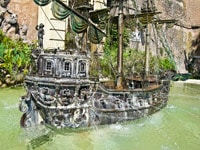
There are many fountains, but the most impressive is the Galleon Fountain, built in the 17th century. It is a reduced copy of an Italian galleon that fires water from 16 cannons. Pope Urban VII praised this artwork with a wise phrase, which translates from Latin: “A machine for waging war, belonging to the popes, shoots not fire, but water, which extinguishes the flame of war.”
Vatican Historical Museum
This is more a museum of the military history of the Vatican city-state than of its general history. In the weapons department, you can acquaint yourself with various collections of weaponry, from ancient Venetian sabers to muskets made by the Remington factory.
Pharmacy
Located right next to the Gate of Saint Anne, the Vatican pharmacy is the oldest in the world. It was founded in 1277. It deals with selling rare medications that can sometimes be hard to find in Italian pharmacies. Some medicines here have different packaging. It dispenses about 6000 prescriptions monthly.
Fire Station
There have been no fires in the palace for over a century, but 20 firefighters are on duty 24 hours a day in the Vatican, equipped with 3 special vehicles.
Vatican Railway
This is probably the shortest railway line in the world. It has no explicit schedule, and its length is only 900 meters. However, it is connected to the Italian railways, and the particular papal car has a kitchen, balcony, and bedroom.
Library
The library contains more than one million books and as many manuscripts. The Pope naturally has the right to take any book he likes indefinitely.
Supermarket
There is only one supermarket in the Vatican, and only people holding a special DIRESCO pass issued by the city governor are allowed to shop there. Not surprisingly, it is viral among the relatives of Vatican residents, who can legally shop there, as prices are much lower than in Roman stores.
Known as “Annona,” the supermarket is located next to Via San Giovanni di Dio, just past the pharmacy. Operating hours: weekdays from 7.00 to 18.00, Saturday until noon.
Vatican Department Store
It was recently moved to the building of the former railway station. Here, you can find a wide range of products, from the most modern televisions and expensive watches to electronic cigarettes, which are 20-30% cheaper than outside the Vatican.
Vatican Post
The postal department was founded in the Vatican in the 14th century. It is a commercial and quite profitable organization, mainly thanks to the sale of commemorative stamps. The post delivers about 8 million letters and postcards annually and has a reputation for functioning much better than the Italian one.
- See the instructions: how to send a postcard from the Vatican
Gas Station
There are several gas stations on Vatican territory, but the most popular is the one south of St. Peter’s Square. Tax-exempt fuel here is 30% cheaper than in Italy. Only individuals with special permits have the right to refuel here.
Interesting Facts About the Vatican
- Area: 44 hectares
- The length of the state border is 3 kilometers
- It is possible to walk around the Vatican in about an hour
- Population: 1100 permanent residents, of which 95% are men
- Official language: Latin
- ATMs: Vatican ATMs are the only ones in the world where the main language used on the screen is Latin
- Time zone: Central European
- Telephone code: 0-03906
- There are no traffic lights in the Vatican
- Vatican citizens do not pay Italian taxes, even if they live in Rome
- No airplanes can violate the airspace of the Vatican
- The Vatican has its own internet domain zone .va. Official website: www.vatican.va
The Pope

Nationalities of the Popes
The list of 264 popes, the successors of St. Peter (to be precise, 262, as Benedict IX was elected three times during the turbulent medieval period for the church), includes 205 Italians (106 Romans), 19 French, 14 Greeks, 8 Syrians, 6 Germans, 3 Africans, 2 Spaniards, and one Austrian, Pole, Palestinian, Englishman, and Dutchman.
Answers to the Most Popular Questions About the Pope
Who was the longest-serving Pope?
The longest-serving Pope was Blessed Pius IX (Beatus Pius PP. IX), who led the organization for 32 years. The shortest term was that of Pope Stephen II, who died of a stroke just four days into his tenure, even before his coronation.
What does the Pope eat?
The Pope’s meals are prepared by five nun sisters who, at his request, put together a special menu. For example, John Paul II was very fond of simple Polish dishes: regularly eating dumplings and żurek (sour rye soup) for lunch and babka cake for dessert. Most vegetables and dairy products are supplied from the Pope’s summer residence – Castel Gandolfo. While most bishops and cardinals can be seen dining in Rome’s finest restaurants, it’s hard to imagine such luxury for the Pope.
Addresses of the most popular restaurants among Vatican citizens in Rome:
- II Mozzicone (Borgio Rio 180; tel. 06 686 1500). Known for traditional Roman cuisine, such as fettuccine al ragu.
- Velando (Borgo V. Horio 26; tel. 06 6880 9955). A favorite restaurant of cardinals, offering dishes of modern Italian cuisine, such as risotto with strawberries or a vegetable strudel with frog legs.
- Taverna Angelica (Piazza Amerigo Capponi 6; tel.06 687 4514). This restaurant specializes in fish, and you can also find a large selection of cheeses here.
Who makes clothes for the Pope?
Before a new Pope is elected at the conclave, three white garments are prepared in small, medium, and large sizes. The wardrobe for the new Pope is sewn and tailored as quickly as possible. For many years, the official tailor shop was Ditta A. Gammatelli, located in the heart of Rome. The masters here hand-sewed all elements of the papal wardrobe. The new Pope, Benedict XVI, changed the tailor, and now his clothes are sewn by Raniero Mancinelli, who has been tailoring for 40 years.
What is the Pope’s daily schedule?
- The day starts at 5:30, with the Pope getting dressed with the help of his personal valet.
- After prayer in his private chapel, the Pope conducts a service for his closest associates and specially invited guests.
- Breakfast begins around 8 o’clock. Like most Italians and residents of Rome, the Pope enjoys Italian-style coffee, and the menu is made according to his own wishes. For example, John Paul II liked to have sausages for breakfast, while Benedict XIII often ordered an egg dish that was named in his honor as Eggs Benedict.
- The daily plan includes important meetings with many bishops who stay in the Apostolic Palace from different countries for meetings every 5 years, called ad limina. During these meetings, they visited the Vatican and met with the Pope in the audience. The Pope also holds regular meetings with the Roman clergy.
- Lunch is around noon, usually in a working setting combined with meetings with the Roman administration. Not surprisingly, Italian pasta is often served for lunch.
- Time from 2 to 4 o’clock is usually reserved for siesta, a traditional southern country’s afternoon rest. The Pope, of course, can work at this time, as John Paul II did, but one should not expect support from colleagues at this time of day.
- Dinner starts around 6:00. The Pope may dine alone, as Pope Pius XII did, or in the company of invited guests, as John Paul I and II did.
- Around 11:00 p.m., the Pope goes to bed after evening prayer.
Papamobile
Thanks to this vehicle, one of the most famous and loved by many, hundreds of thousands of believers can see the Pope live for a few minutes. 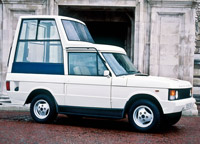
What is the fuel consumption of the Papamobile?
What is the registration number of the Papamobile?
Facts and Figures about Papamobiles
- In addition to companies like Land Rover and Mercedes, vehicles for the Pope are also produced by Fiat, Renault, Peugeot, General Motors, Toyota, and Volkswagen.
- The astronomical prices of papamobiles are never disclosed, as they are gifts from the manufacturers.
Before the Popes began riding in armored vehicles, they were transported in regular production models, several of which are on display at the Vatican Automobile Museum. Almost immediately with the beginning of automobile manufacturing, the Vatican began to use several exquisite models. Pope Pius XI was a fan of the Isotta Fraschini limousine, and his successor, Pius XII, had several Cadillacs designed especially for him, one of which even accommodated the papal throne. Pius XII was also a gifted model of Bianchi, Fiat 525, and Graham-Paige. It is not surprising, given such vehicles, that the Pope often shouted at his driver: “Velocita, Velocita!” (faster, faster).
- Ferrari, on the occasion of the 26th anniversary of his pontificate, gifted John Paul II a red model of the world’s fastest Formula 1 car – F2004, made on a scale of 1 to 5.
Vatican Citizenship
Obtaining Vatican citizenship is not easy. As of 2024, among 1100 residents, only half had Vatican citizenship, including 61 cardinals and all members of the Swiss Guard. At the same time, every cardinal coming here receives temporary residence. Citizenship is granted only to the highest ranks of the Catholic Church in the Pope’s entourage.
Interestingly, all Vatican passports are diplomatic – citizens of the Vatican are treated as church diplomats in all countries.
Though living on its territory, the rest of the Vatican residents still have limited access to Vatican stores and shopping houses. It is worth noting that all citizens of the Vatican have dual citizenship – also of the country they are originally from. The other 3000 Vatican employees are residents of Rome.
Swiss Guard
The Swiss Guard was founded in 1506 by Pope Julius II (Giuliano della Rovere), who was very fond of the Swiss army. For his protection, he enlisted 150 Swiss soldiers. Julius II, nicknamed ‘The Warrior Pope’ among his entourage, even sent the Guard to battle against the French who had occupied Italy before its unification.
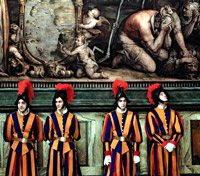
The stunning brown uniforms were designed by a Vatican seamstress by order of Benedict XV in 1914. Most likely, she was inspired by one of Raphael Santi (Raffaello Santi)’s figures, which featured similar elements. On the anniversary of the heroic defense of the Vatican on May 6, 1527, ceremonial swearing-in ceremonies for new members of the Guard take place, where they swear allegiance to the Pope in front of the entire company.
Candidates for the Guard must be between 18 and 25 years old, with a height of around 180 centimeters. After being enlisted, recruits are trained in sword fighting and halberd combat (German: Hellebarde, French: Hallebarde), just as their predecessors have been for centuries. Naturally, they are also trained in the use of the most modern weapons and the most advanced anti-terrorism techniques. When patrolling the Vatican, the Swiss Guard does not carry firearms – this prohibition was introduced by Pope Paul VI in 1970.
For the protection of the apostles’ capital, only halberds are used. In addition to the honorable profession and a very prestigious entry in their work record, guards receive a quite generous salary, amounting to about 4000 euros.
Explore: how to choose a hotel near the Vatican.
How to Get to the Vatican?
The Vatican is within walking distance from another main Roman attraction Castel Sant’Angelo. The nearest metro station is called Ottaviano (map point). See detailed instructions: how to get to the Vatican
Tours and Self-Guided Visits to the Vatican
Tourists can visit St. Peter’s Square and Basilica for free, from 7 a.m. daily, except Sundays and significant Catholic holidays (January 1, Easter, June 29, August 15, December 8, and 25). On holidays and Sundays, the Pope conducts mass in the square. Mass starts around 10:00, and to get a closer spot to the Pope, believers arrive 2-3 hours in advance.
To enter the Basilica, you must go through security checks, and during the day, you might wait several hours in line. Watch a video on how to enter the Basilica without waiting:
To visit the viewing platform on the Dome of the Basilica, you need to buy a ticket at the ticket office, see instructions.
After waiting in line for several hours to visit the Vatican Museums, you can buy a ticket at the ticket office – this way, you save 4 euros. You can book tickets to the Vatican Museums in advance online on the official website, see instructions. In high season, from March to November, and on dates close to holidays, tickets often sell out – they need to be booked weeks in advance or contact an agency. An online ticket is purchased for a specific time and allows you to bypass the queue at the ticket office.
Webcam: Live Stream from the Vatican
You can view the list of scheduled streams on the official YouTube channel of the Vatican.
 Italy for me From Italy with love
Italy for me From Italy with love

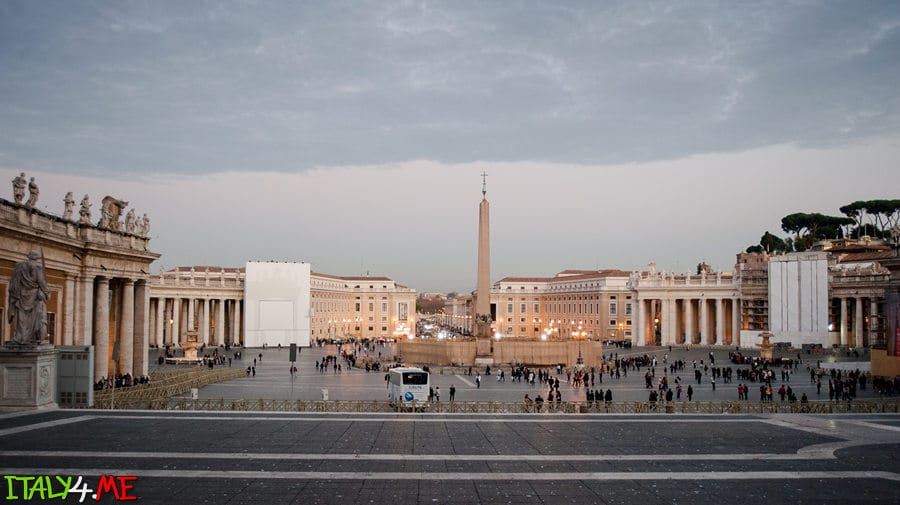
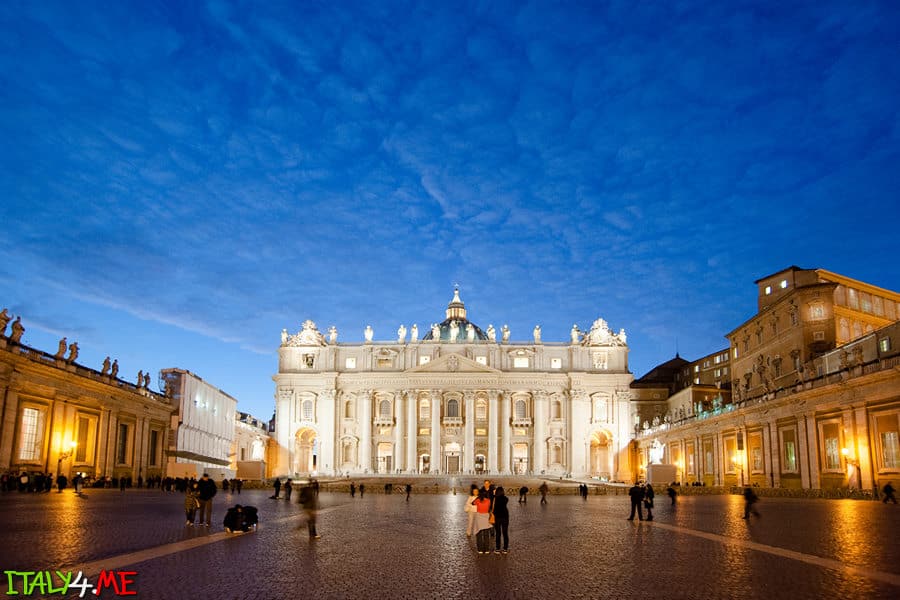
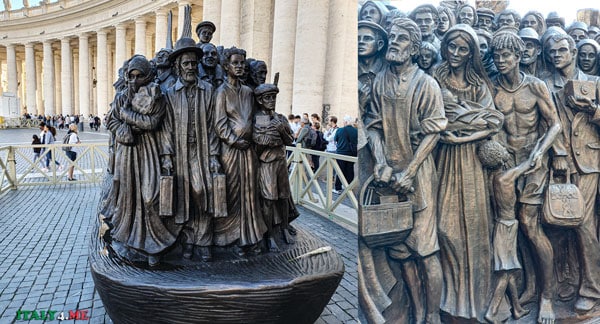

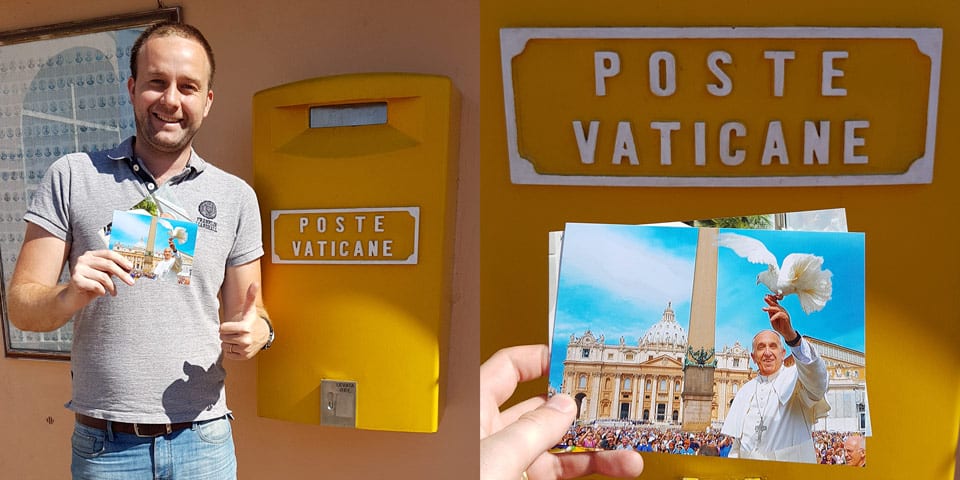
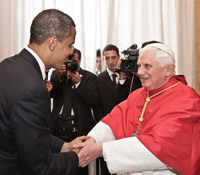

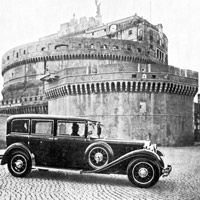 Before the Popes began riding in armored vehicles, they were transported in regular production models, several of which are on display at the Vatican Automobile Museum. Almost immediately with the beginning of automobile manufacturing, the Vatican began to use several exquisite models. Pope Pius XI was a fan of the Isotta Fraschini limousine, and his successor, Pius XII, had several Cadillacs designed especially for him, one of which even accommodated the papal throne. Pius XII was also a gifted model of Bianchi, Fiat 525, and Graham-Paige. It is not surprising, given such vehicles, that the Pope often shouted at his driver: “Velocita, Velocita!” (faster, faster).
Before the Popes began riding in armored vehicles, they were transported in regular production models, several of which are on display at the Vatican Automobile Museum. Almost immediately with the beginning of automobile manufacturing, the Vatican began to use several exquisite models. Pope Pius XI was a fan of the Isotta Fraschini limousine, and his successor, Pius XII, had several Cadillacs designed especially for him, one of which even accommodated the papal throne. Pius XII was also a gifted model of Bianchi, Fiat 525, and Graham-Paige. It is not surprising, given such vehicles, that the Pope often shouted at his driver: “Velocita, Velocita!” (faster, faster).